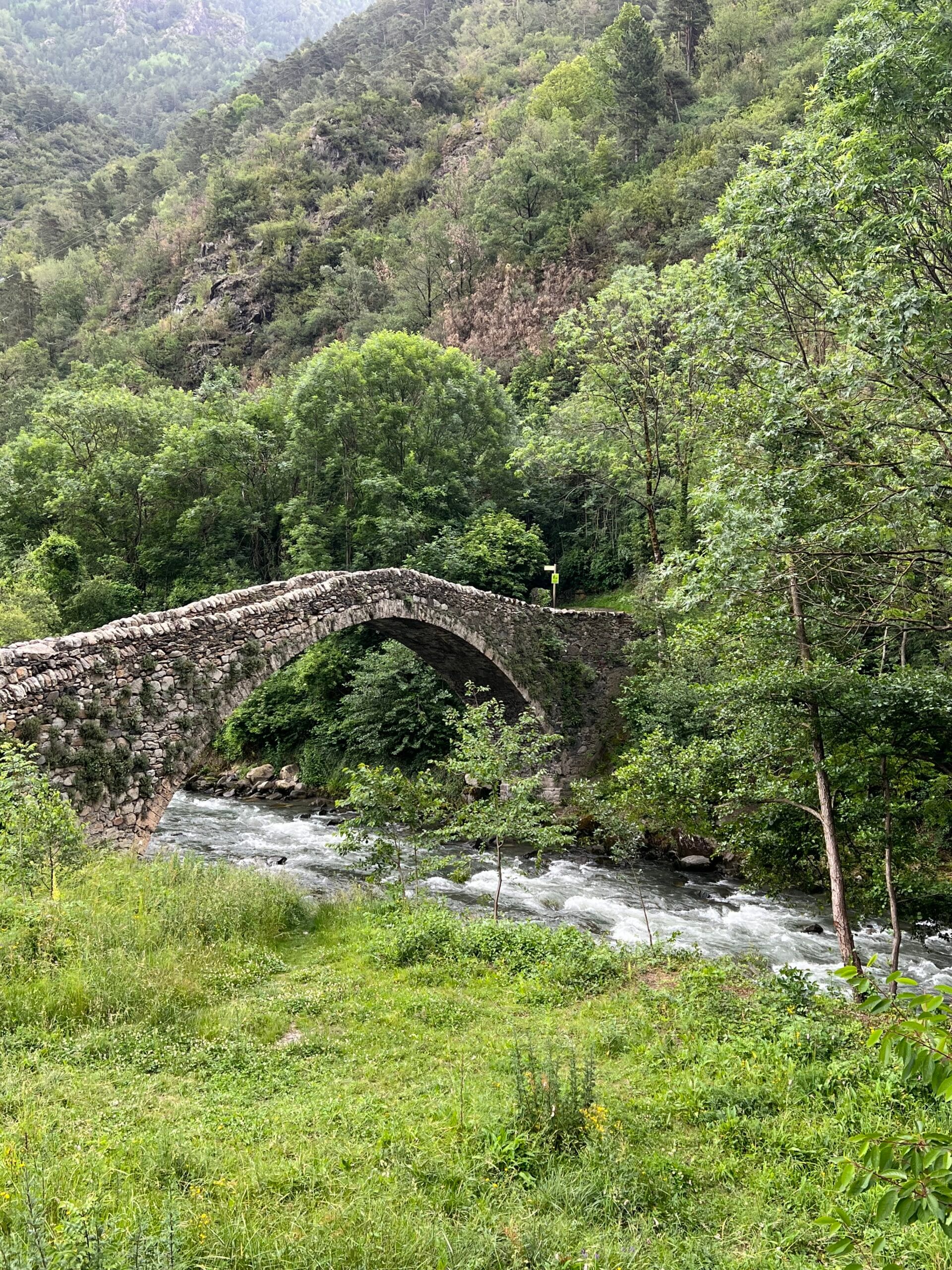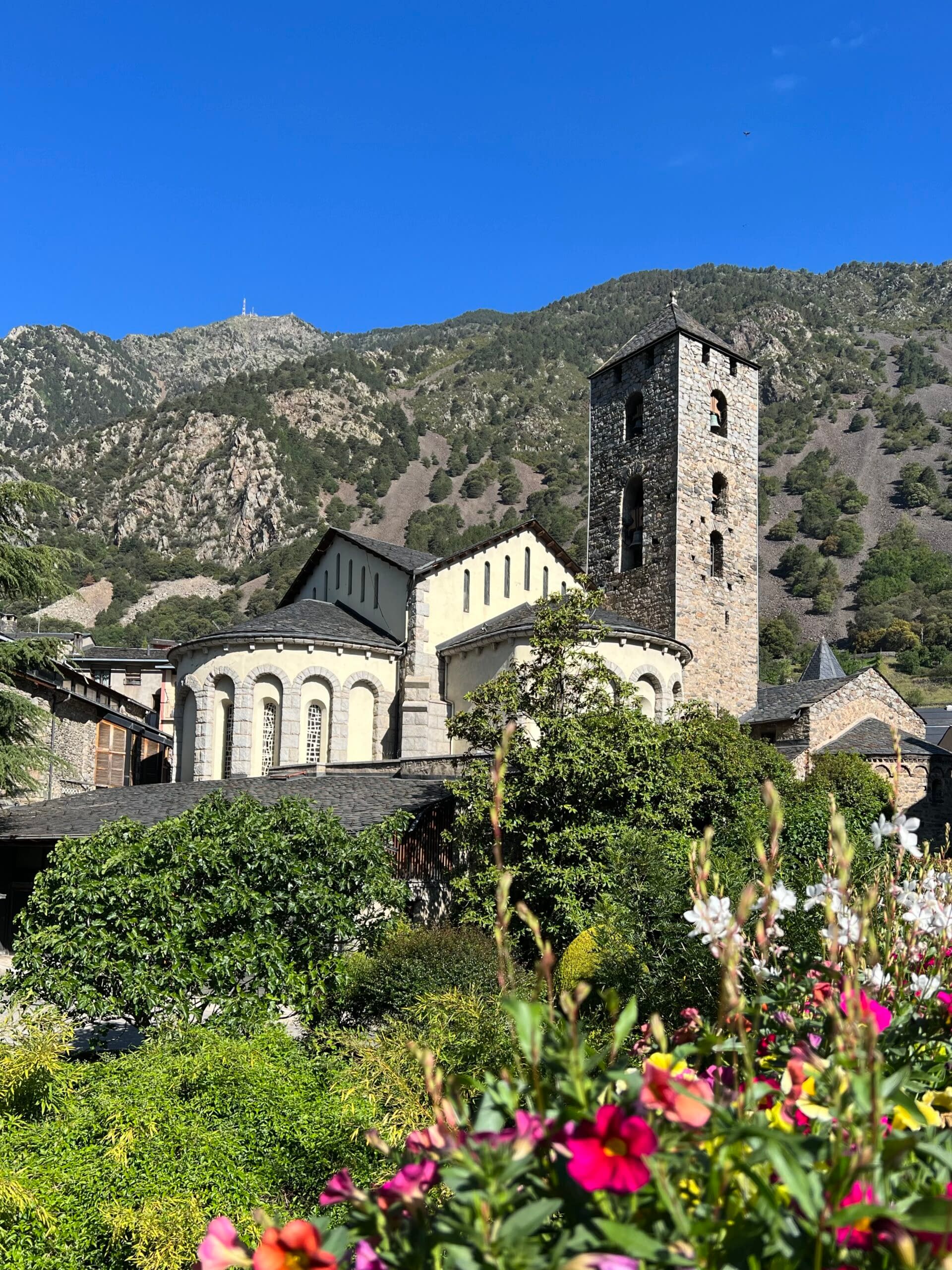One of Europe’s six microstates can be found wedged between Spain and France. This small paradise is nestled among the towering peaks of the Pyrenees, where time seems to come to a halt. At just 468 km², the Principality of Andorra is among the smallest countries in the world. Despite its humble size the popular ski destination still manages to attract around ten million visitors annually. That’s 128 times as many tourists as there are inhabitants. Perhaps the country isn’t quite as hidden as one might think.
The principality in the Pyrenees
According to legends, Andorra was granted status as an independent state by Charlemagne in the 800s in return for their efforts in the war against the Moors. To avoid conflicts over who should hold power, the two neighboring countries decided in 1278 to make the small area in the Pyrenees a diarchy – a corule. The bishop of the Catalan region of Urgell and the French count of Foix were appointed as co-princes and heads of state. A few revolutions and guillotinings later, the latter title passed to the President of France. Hail thee, Prince Macron!
For centuries, Andorra was governed by its neighbors, until the country drafted its constitution in 1993 and became a member of the UN. Now, what a splendid year that was. Not just for Andorra, but also for the world at large, as it was the year I graced the earth with my presence. This year, both Andorra and I are hitting the big 3-0 – maturing nicely, if I may say so myself. Since the constitutional referendum, the principality has been a parliamentary democracy with the bishop of Urgell and the French president serving as symbolic heads of state.
Although the country has its own unique culture, the French and Catalan influences are obvious. Andorra is the only country in the world that can boast of having Catalan as its official language. At least until the day Catalonia manages to secede from Spain. French is also frequently heard on the streets, and the menus often include snails and coq au vin. Despite our Francophile tendencies, we were determined to discover what gives Andorra its own unique identity.


A busride through the mountains
When we decided to go to Barcelona for three weeks, Rasmus immediately thought of Andorra. His fascination with microstates has previously taken us to both the Vatican and Monaco. It seemed obvious to tick another country off the list when it was “only” 200 kilometers away.
Our day started early, very early. The alarm clock rang at five on a Saturday morning. We downed a strong cup of coffee before we had to take the bus. Yes, you read that right, we had to take the bus. Much to Rasmus’ chagrin, the small principality has no railway. He had to bite the bullet and endure the three-hour trip on the bumpy country roads.
For me, public transport is as soporific as sleeping pills. We hadn’t gone far before I drifted off. Rasmus, on the other hand, could enjoy the scenic drive with views of trickling rivers and towering mountains. The route took us through several tunnels leading us under the Pyrenees before reaching the capital of the principality, Andorra la Vella.
After four months in the Caribbean followed by two weeks in Barcelona, it was a chilly experience to step off the bus. The morning sun had not yet taken hold and being in Europe’s highest capital, we had to settle for the cool mountain air. The temperature demanded a scalding pick-me-up and we only made it a few hundred meters before we dove into a café. The room enveloped us in a warm embrace, aided by the kitchen’s ovens, which provided fresh pastries to the hungry guests.

“There is something interesting about these tiny sovereign states that, despite their size, still have influence in international politics. They might not weigh heavily on the scales, but they still have a say nonetheless.”


The start of an adventure
While we warmed ourselves with two mugs of coffee, we had a clear view of the 7 Poets. The seven sculptures are created by a Catalan artist and represent Andorra’s seven parishes. The intention of placing the poets atop 10-meter-high columns is to urge people to break away from their cocoons and instead, lift their gaze to appreciate the surrounding beauty. We can confidently testify to the abundance of beauty all over the place. What a way to start our journey!
A stone’s throw away, and by a stone’s throw’ I mean the vertical kind, is Casa de la Vall. The building served as the seat of the Andorran parliament from 1702 to 2011. We were a bit too cheap to pay the entrance fee and chose to admire the beautiful stone-clad facade instead. On one corner of the building stands the old guard tower, which has also been used as a dovecote and later as an archive. The pyramid spire on the tower sent me straight back to my childhood. I saw myself sitting in front of the old CRT television with my dad, as the Smurfs appeared on the screen. No matter how much I tried to repress the comparison, there was something about the old tower that reminded me of Gargamel’s house.


The healing springs
Initially, we had no intention of venturing outside Andorra la Vella. For a single-day trip, it seemed too ambitious. We are well aware of our tendency to be overly optimistic when it comes to time management, often planning more than we can feasibly do. However, we ended up visiting two different parishes and several different cities during the nine hours we were in Andorra. It sounds like a lot, and we weren’t even aware of it until I started writing this post.
The microstate in the Pyrenees is simply so small that by walking 5.5 kilometers you can experience no less than four different cities, including the capital. Where one city ends, the next one begins. Andorra La Vella and Escaldes-Engordany are so closely connected that they are often considered as one big city, even though they each have an administration and a mayor.
The city of Escaldes-Engordany is especially known for its hot springs, which are said to have healing properties. One of the major landmarks is the wellness center, Caldea. In addition to being Andorra’s tallest building, Caldea also holds the title of Europe’s largest thermal spa with its 44,849 m². Unfortunately, we did not get to visit. Rasmus wasn’t entirely convinced that I could be pulled away from the warm pools once I was in. He knows me too well, and we will have to save the pruney fingers for another time.
Nevertheless, we still managed to have a small taste of the spa experience. On our way through Escaldes-Engordany, we passed a fountain supplied by the Font del Roc del Metge. The name loosely translates to ‘the spring from the doctor’s rock’. The spring produces about 3,600 liters of water per minute and not only supplies Caldea but also several other spa facilities and hotels. We had to settle with letting our hands submerge in the 70-degree hot water. Who knows, perhaps its healing effect has saved us from a future with arthritic fingers.


Broer i stride strømme
Andorra is not only rich in thermal springs. The country also boasts numerous lakes and three large rivers, formed by streams from the mountains. With droughts everywhere in Europe, it was refreshing to listen to the loud gushing of the Gran Valira which in some places receives warm water from the springs. It was clear that there had been no attempt to shape the winding river after the city, but rather the opposite. Several bridges lead over the Gran Valira, and each bridge has its unique expression. The avant-garde steel constructions bear witness to a rapidly advancing society where art is encouraged and highly valued.
The prominent role of art is noticeable everywhere in the capital. In 1999, one of Salvador Dalí’s masterpieces was donated to Andorra. On a prominent spot on one of the many bridges stands his work ‘Noblesse du Temps’. The nearly five-meter-tall bronze sculpture represents a melting clock. The sculpture symbolizes the passing of time and its dominion over humans. For me, the location is perfect, as Andorra gave me the feeling of having stepped into a time capsule.
As a counterpoint to modern architecture and art, Andorra also has numerous relics from the past. Arched granite bridges from the 14th century still lead pedestrians dryshod over the river. Surrounded by stone-clad houses and with magnificent mountains in the background, these bridges appear as motifs from jigsaw puzzles. We only lacked a little yodeling in the distance to complete the feeling of having stepped into a mountain village from a fairy tale.


A much-needed breather
On our brief adventure in Andorra, we allowed ourselves to be impressed and inspired by the country’s unique origin and culture. The Andorran people carry their history with pride, which became clear on our trek through the cities. As a visitor, it’s hard not to be enchanted by all aspects of the small principality in the mountains. From the well-preserved old churches and narrow passages to the modern art installations that manage to capture the spirit of the country.
Our short stay in the Pyrenees contrasted with the pulsating life in Barcelona, where noise is inevitable and street vendors lurk around every corner. Andorra’s calm and majestic mountain landscapes had reintroduced a balance into our everyday life. Even though our legs were tired and our heads were filled with impressions, it had been refreshing to slow down and let ourselves be enveloped by nature.
This definitely won’t be the last time we set foot on the cobblestone streets of Andorra!
